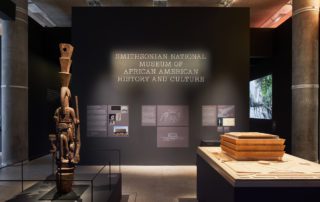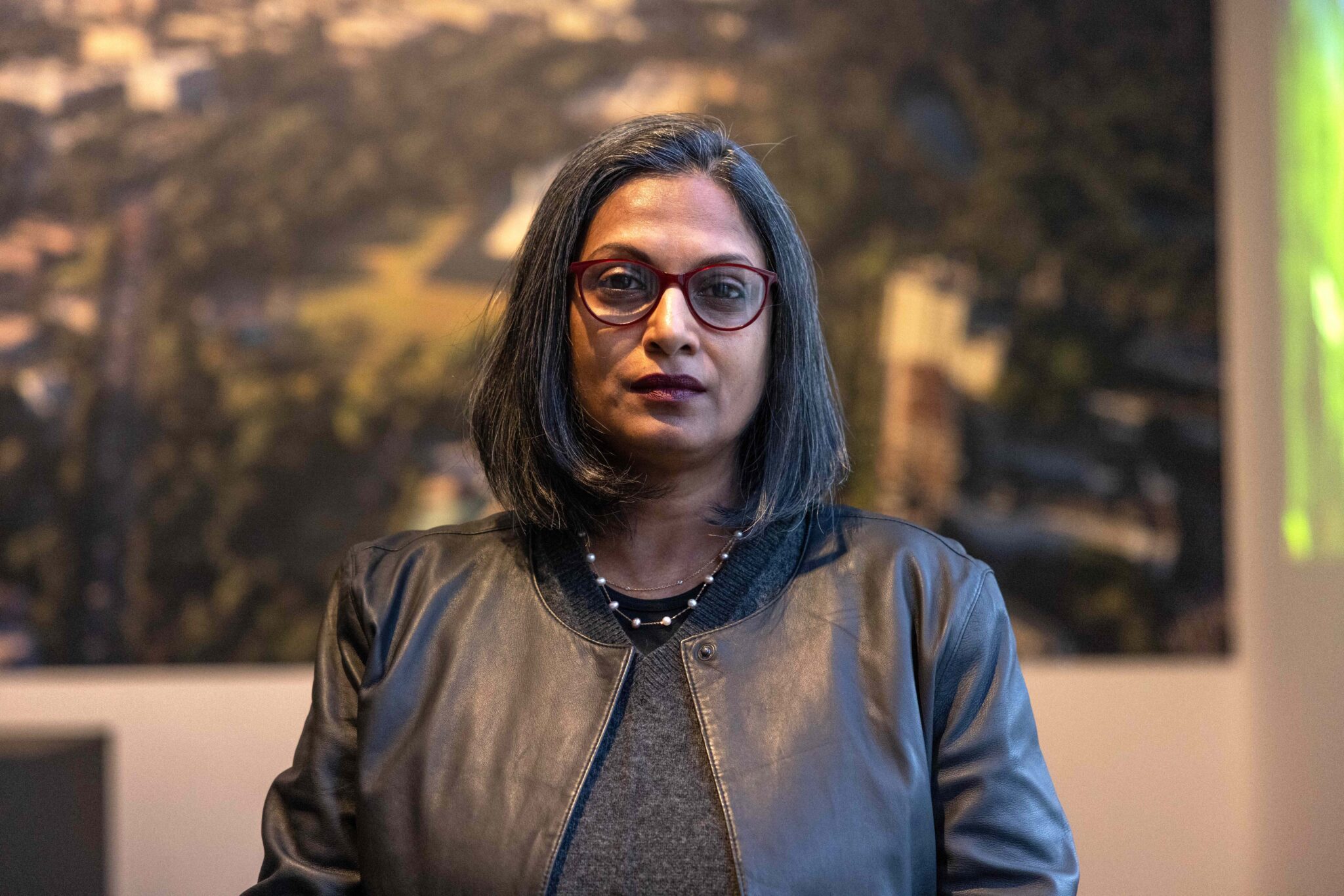David Adjaye explores monuments and memorials at the Design Museum
Invited to “think in public” for a major show at the Design Museum, David Adjaye has chosen to consider the role and function of memorials and monuments in the twenty-first century, through the prism of seven of his own built and as yet-unbuilt projects.
Adjaye’s contention is that the democratic, pluralist, egalitarian impulses of the age are not well served by conventional monuments. Rather than static objects that invite a ritualistic form of observance, he asks if monuments might be opportunities for education, questioning, and assembly as well as remembrance. And he suggests that the job of the monument is not only – or even mainly – to act as a reminder of the duty of the present to honour the past, but as a spur to make a better future.
Each of the seven projects is shown in its own room, with a large central model, 1:1 scale reconstructed fragments of buildings, or large sample panels, monitors playing clips of interviews with Adjaye, drawings, and a number of intriguing objects that have inspired Adjaye’s architecture, from giant colourful parasols that are esteemed in Ghana, and influenced his design of the proposed National Cathedral, to a carved Yoruba verandah post in the figure of a man whose three-tiered crown inspired the Smithsonian National Museum of African American History and Culture (2016).
These two major public buildings, and the ‘Sclera’ pavilion originally built from American tulipwood for the 2008 London Design Festival, are not monuments in the conventional sense. The other four are more directly works of memorial architecture: there is Gwangju River Reading Room (2014) which commemorates student democracy protestors killed in 1980; there are as-yet unbuilt memorials to the Holocaust in London, and to Coretta Scott King and Martin Luther King Jr. in Boston; and there is the unbuilt Mass Extinction Memorial Observatory intended for Portland, Dorset – a ‘live’ memorial in spiralling stone, marking the extinction of species with a tolling bell and a growing collection of carvings.
David Adjaye portrait and exhibition installation views (above): Ed Reeve
“The monument is no longer a representation, it is an experience of time and place that is available to everyone”, says Adjaye. “Whether it’s for a nation, a race, a community, or a person, it is really used as a device to talk about the many things facing people across the planet. Democratisation does not mean that monuments cease to be relevant; it requires the monument to be transformed, so that it has an inbuilt openness and can be approached and understood from many points of view.”
‘David Adjaye: Making Memory’
The Design Museum, London
Until 5 May 2019











































